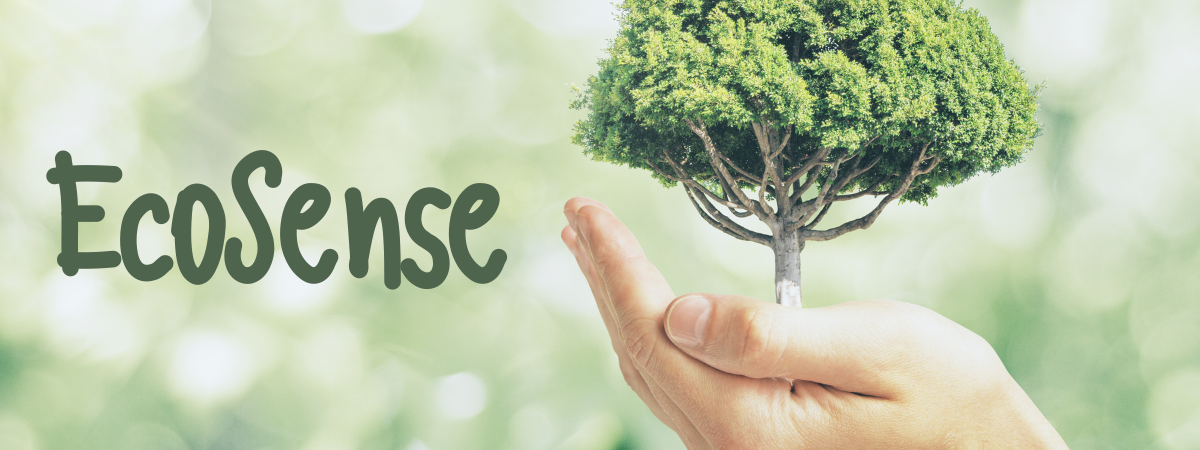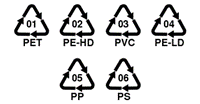Make Sense Of Sustainability
Make Sense of Sustainability
As human beings, our planet means the world to us – literally! That’s why we need to make sure it stays around for as long as possible. But if you’ve been pulling your hair out trying to keep up with the jargon that surrounds sustainability, don’t panic! You’ve come to the right place to start making sense of it all.
We understand it can be quite the challenge knowing your biodiversity from your bioaccumulation. And what exactly is the difference between carbon footprint and carbon offsetting, anyway? In order to navigate all of this new lingo, and in honour of World Kindness Day, we’ve put together a handy glossary to make sustainability a little less daunting. We’ve been using this information as an in-house tool which came about through product development and selection. There’s plenty more to add and we’d love to hear from you if you have any additions.
Now, let’s dive into some of the terms you’re likely to come across in your
quest for eco-consciousness in the promotions industry and beyond:
JARGON BUSTER
Popular Product Materials
|
Product Material |
Sustainable Credentials |
Sustainable Considerations The Good and the Not So Good |
|
BIOplastics
|
Bioplastics are plastic-like materials made from natural sources like vegetable fats, oils, starches, straw, wood chips and sawdust. |
The Good Made from natural materials which are renewable Does not contain toxic chemicals or compounds Biodegradable and compostable under the correct conditions The Not So Good There is A LOT more research needed on this material and its sustainability credentials. A Bioplastics are a product of farming and take up valuable capacity that could be used for growing much-needed food Most types are not recyclable Local authorities have no way of recycling bioplastic, meaning it will end up in landfill or being incinerated – causing further Only some types of bioplastic are compostable and those that are require industrial composting The use of compost can be compromised by any ink printed on the product, as this could pass into the food chain Considerations When recycling bioplastic pens, remove the refill and spring Remove the ink from the product where possible Remember that composting requires a set temperature In the promotions industry, we have mainly seen pens and bags made of this material Printed pens and packaging should not be placed in composting bins as the print will contaminate the compost heap and, if the compost is used as fertiliser, contaminants will enter the food chain |
|
Organic
|
Organic farming promotes ecological balance and There’s a long-standing joke that organic food is what your grandparents called food! That’s because we’ve become reliant on pesticides and chemical fertilisers to grow crops on a commercial scale. |
The Good Healthier Better taste Contains high levels of antioxidants The Not So Good Organic farming requires more labour and higher production costs than pesticide-assisted farming, resulting in an expensive end product It cannot produce enough food for the world’s population |
|
Bamboo
|
Bamboo is a renewable natural product and the fastest growing plant on Earth. |
The Good Naturally pest-resistant – requires no nasty pesticides! Requires far less water than similar plants Regrows to adult size in 3-5 years (it can grow 2 feet in 1 day!) Absorbs 5 times more carbon dioxide than similar plants Produces 35% more oxygen than similar plants Bamboo fibres that make up the natural element of processed bamboo products reduce the amount of plastic required The Not So Good Some bamboo products use a chemical process to convert the material into the end product Processed bamboo products only contain bamboo fibres and the rest is made up of polymer Processed bamboo products cannot be recycled and must be put in a landfill or incinerated Processed bamboo products cannot be composted Considerations If the product is made from processed bamboo and is used to store food or liquid, it should Presently, we see products made from processed bamboo across our industry |
|
Recycled
|
Recycled materials are products made from discarded or no longer needed products or materials. |
The Good This product will have been made up of one or more materials from an item previously used and no longer needed The Not So Good Product quality or colour can be impacted There is no universal standard for accreditation Considerations Trusting your supply chain is key here to ensuring the products are as described Post-consumer recycled material is the best form of recycled product |
|
Recyclable
|
Recyclable materials can be reused in order to make new materials. |
See Sustainable Considerations for “Recycled” |
|
Plastic
|
Plastic is made from non-renewable resources like fossil fuels to create a solid material. The most popular plastics are:
PET plastic – Highly-recyclable material accepted by 94% of UK councils. PE-HD: High-density Polythene – collected by 92% of UK councils. PVC: polyvinyl chloride – Not generally collected from households for recycling, which could explain why PVC PE-LD: Low-density Polythene & PP: Polypropylene – Not generally collected for recycling, but mixed PS: Polystyrene – Not generally collected from LDPE – Only recyclable at specialist facilities. |
The Good Cheap Strong & long lasting Inexpensive Can be sterile The Not So Good Non-biodegradable Impacts wildlife and marine life if not disposed of correctly Takes up landfill space Not all plastic can be recycled, so contact your local facility before attempting to recycle it Plastic cannot be recycled an infinite number of times Recyclability isn’t always clear or consistent Considerations Contact your local authority Plastic products have a long shelf life when made well Reusable plastic products are still a great sustainable choice because they will not be thrown away, so choose wisely when buying plastic products |
|
Wood |
A natural, renewable material commonly used in construction and product design. |
The Good Natural Renewable Durable Non-toxic Biodegradable in its raw state The Not So Good The use of wood in manufacturing contributes to deforestation, leading to loss of habitats and increased carbon emissions Considerations Make sustainable choices by opting for FSC® certified or reclaimed wood The EU has introduced legal measures to protect forests. Wood from outside the EU may have originated from endangered species and tends not be supported by replanting initiatives Be aware that some wood treatments can compromise the biodegradability of the wood |
|
Paper |
A versatile material made from pressed pulp fibres, commonly derived from wood sources. |
The Good Biodegradable Recyclable Usually derived from natural sources Recycled paper production saves more energy than the production of virgin paper The Not So Good Directly contributes to deforestation Toxic chemicals are used to recycle paper When decomposing, paper releases a harmful greenhouse gas called methane Paper production requires very large volumes of water Considerations Always opt for paper from sustainable sources like the FSC® Remember that paper is only recyclable when clean – it cannot be stained with grease, foodstuffs, paint or dirt Be sure to remove any plastic wrapping from newspapers and magazines before recycling. This must be recycled separately To determine if paper is recyclable, scrunch paper up. If it remains scrunched and doesn’t spring back, it is suitable for recycling. |
Processes
|
Process |
Sustainable Credentials |
Sustainable Considerations The Good and the Not So Good |
|
Biodegradable
|
A substance or product that is able to decompose by |
The GoodBiodegradable products reduce carbon dioxide levels and greenhouse gas emissions Break down naturally and don’t release harmful compounds when doing so The Not So Good Depend on certain weather conditions to break down properly Do not decompose in water, so they won’t solve the issue of marine pollution Considerations Remember they must be disposed of very specifically |
|
Compostable
|
A natural process in which microorganisms, bacteria and |
The Good Creates a natural, organic fertiliser Reduces landfill waste Improves soil health The Not So Good Not all compostable products are suitable for domestic compost bins Compostable items cannot be placed with your standard recycling |
|
Recycling
|
The act of converting waste materials into new products to avoid sending the waste to landfill. |
The Good Recycling ensures a secure supply chain by processing non-biodegradable plastics that are already in circulation and turning them into new products Conserves valuable non-renewable resources Reduces landfill waste The Not So Good Some areas do not have access to recycling facilities or simply can’t afford them, so are forced to use landfills as a cheaper alternative Recycling and manufacturing products from recycled materials uses energy Considerations Not all products that you might assume are recyclable are actually recyclable, so always check the symbols carefully |
|
Renewable Energy |
Renewable energy works by harnessing power from |
The GoodSustainable and abundant Takes advantage of power that would otherwise go to waste Low-maintenance systems The Not So Good Can result in air pollution Requires a lot of energy to produce Can be dependent on seasons |
Popular Accreditations
|
Name |
What the Accreditation Stands For |
|
FSC®
|
Forest Stewardship Council Any product that is FSC® Certified has met the |
|
Fair Trade
|
The symbol of a person triumphantly raising one hand in |
|
ISO14001 |
ISO14001 is the international standard that specifies |
Eco Terms
So, now that we’ve brushed up on our products and processes, let’s take a
closer look at some general eco terms and what they really mean:
Biodiversity: Biodiversity is the level and variation of life in a
particular environment. High biodiversity means that plant and animal life
is thriving, while low biodiversity suggests that only a small amount of
natural life is supported.
Bioaccumulation: This super-sciency sounding term is what we call the
accumulation of materials within an organism. Over time, chemicals and
pesticides build up in certain organisms – often at a much faster rate than
the organism can get rid of those substances…
Carbon Emissions: Carbon emissions are released when fossil fuels are
burnt, causing harmful greenhouse gasses to be released into the
atmosphere.
Carbon Footprint: Carbon footprint is determined by the amount of carbon
dioxide a person, product or organisation emits.
Climate Change: Climate change is a change in climate patterns caused by an increase in carbon dioxide. This has a knock-on effect on the environment and causes global temperatures to rise, leading to the shrinking of glaciers and disruptions to natural habitats.
Watch this no-nonsense video for a straightforward and simple explanation
of climate change:
Youtube Video
Corporate Responsibility: In terms of sustainability, corporate
responsibility refers to the self-regulated goals of a company or
organisation to reduce their carbon footprint and adopt sustainable
business practices.
Deforestation: This refers to the removal of trees from forest areas to
make room for other things that certainly aren’t forests… When
deforestation occurs, habitats are lost, and greenhouse gases are
increased.
Eco: ‘Eco’ has become an umbrella term for anything that is beneficial for
the environment. It also refers to any product or practice that is less
harmful than non-eco alternatives.
Global Warming: This describes the warming up of the planet over time as a result of greenhouse gas emissions and carbon dioxide.
Greenhouse Effect: Gases in the Earth’s atmosphere trap heat from the Sun, causing the Earth to get hotter. This process is similar to the
heat-trapping phenomenon experienced with actual greenhouses (N.B. actual greenhouses are not the cause of the issue, so don’t go hurling bricks into your neighbour’s garden in a bid to reduce the Greenhouse Effect!)
Greenwashing: This relatively new term that suggests that an
environmental claim is misleading and has just been made in order to make
the manufacturer appear to care about the planet.
Sustainable: And just like that, we’ve come full circle in our discussion
of sustainability jargon. The word itself means maintaining something at a
certain level, so in terms of the Earth, we want to make sure we are using
processes and materials that we can continue to use over a long period of
time in order to cause as little damage to the environment as possible.
In Summary
We hope this article helps to demystify some of the jargon around
sustainability, and we encourage you to share this information with your
friends and family so that we can all understand the change we’re working
towards that little bit better.
Further Reading
Want to put your knowledge of eco symbols to the test? Check out these
interesting articles to learn more:
https://www.pureplanetrecycling.co.uk/waste-recycling-glossary/
https://www.greenlivingtips.com/articles/green-jargon-and-terminology.html
https://www.thisiseco.co.uk/news_and_blog/recycling-symbols-explained.html
https://www.gov.uk/government/publications/sustainability-plan/sustainability-plan
https://www.hants.gov.uk/landplanningandenvironment/environment/climatechange/sustainabilitypolicy
http://grantham.sheffield.ac.uk/bio-based-biodegradable-and-compostable-plastics/














